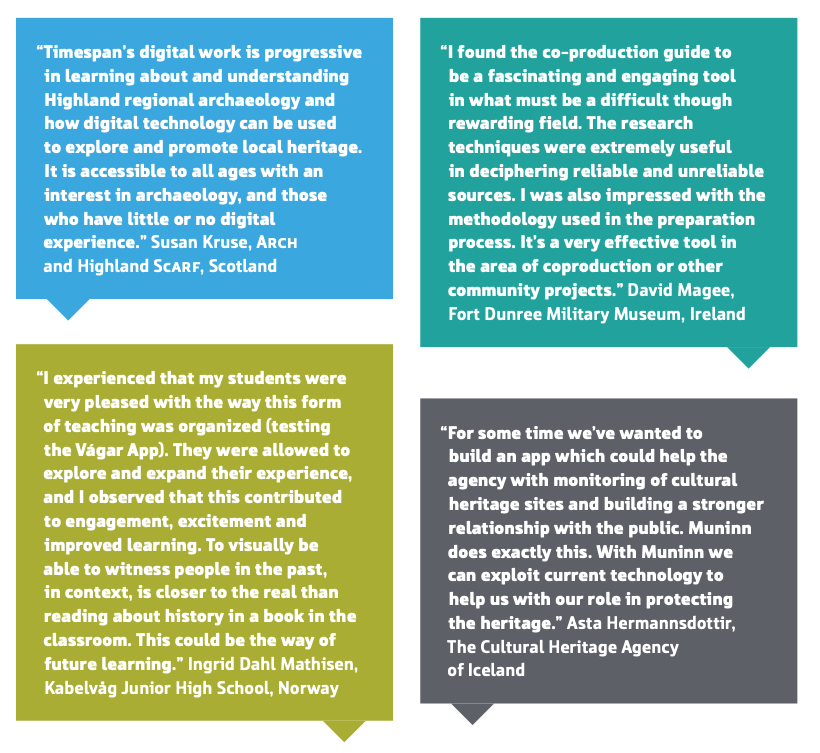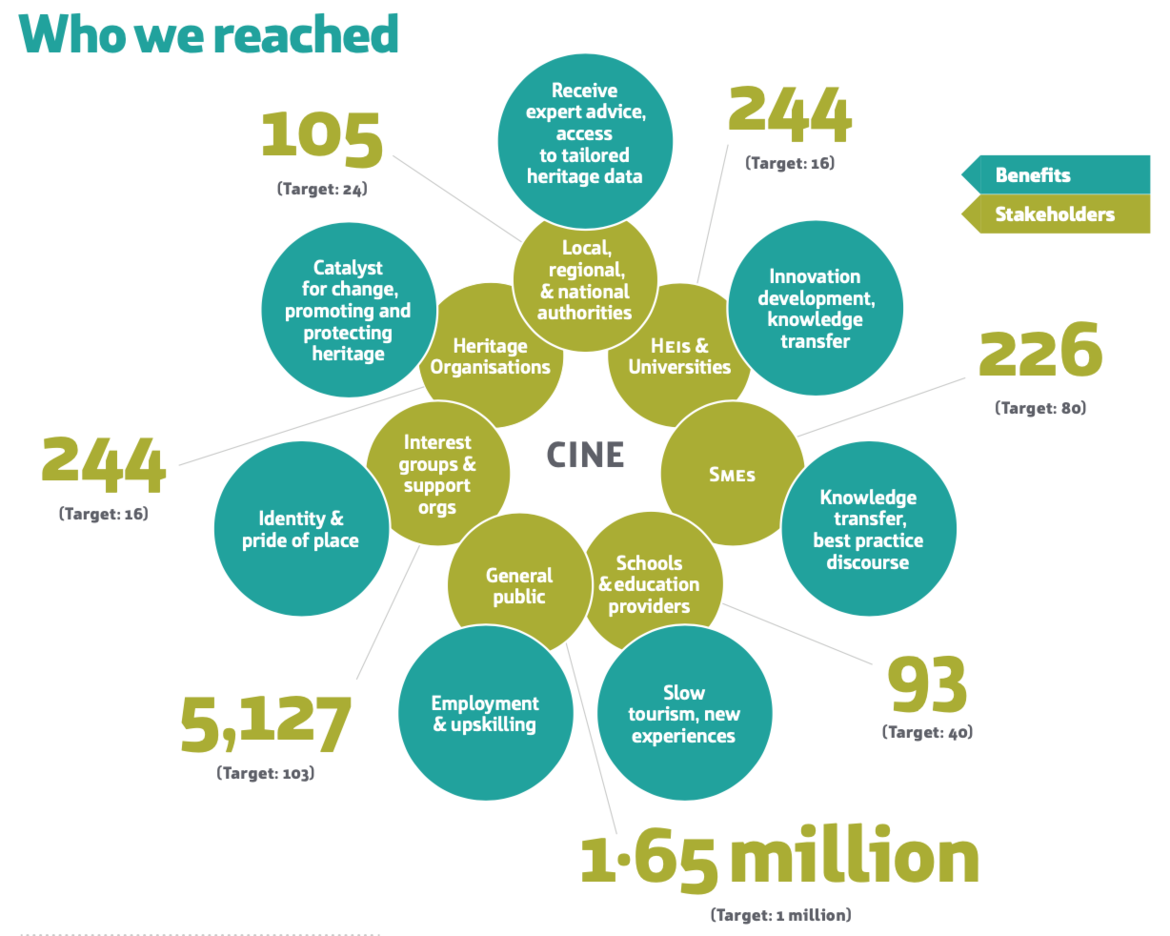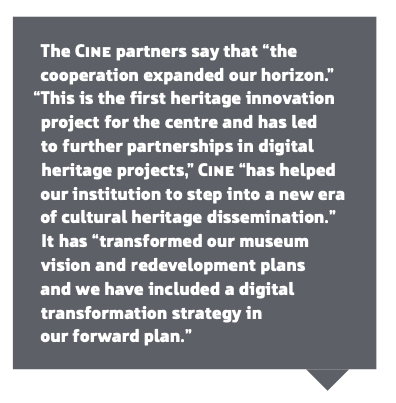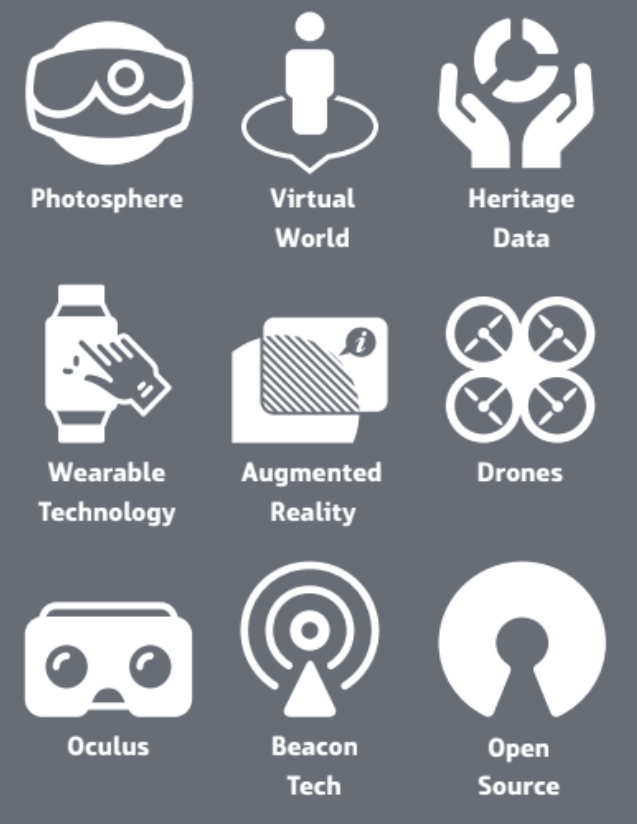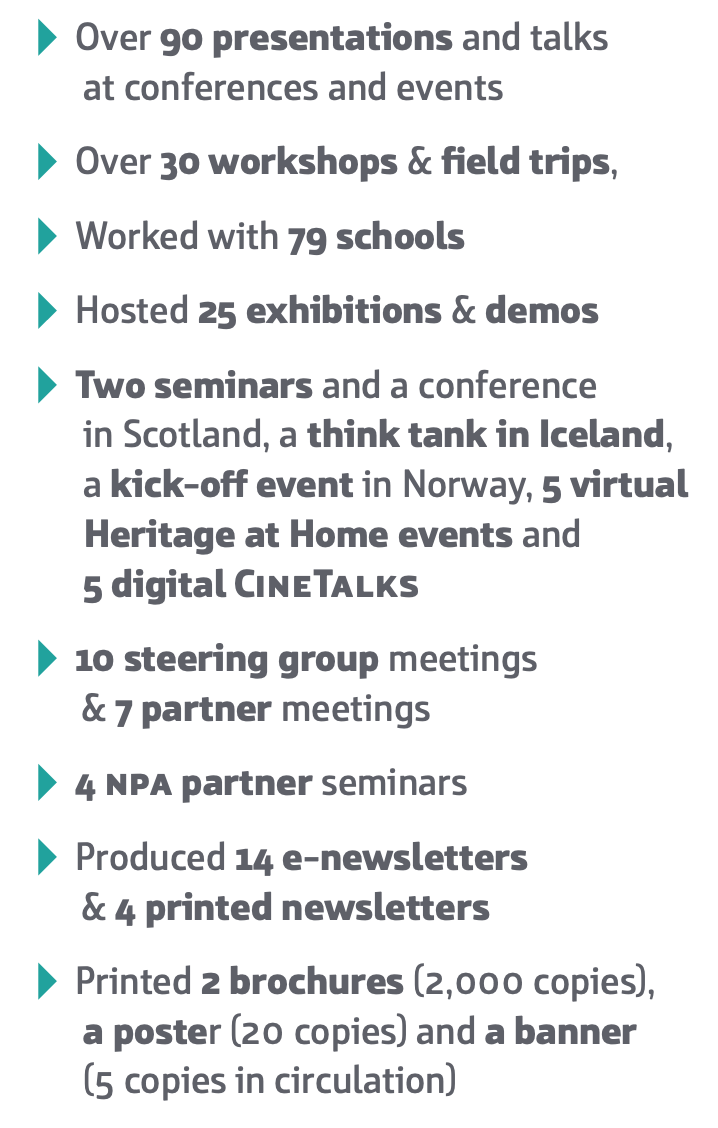Outputs and Results
CINE had three main project objectives
- to protect, develop and promote natural and cultural heritage
- to improve accessibility to valuable heritage information
- to strengthen identities of remote areas by knowledge transfer.
These objectives are aligned to the following project results:
CINE explored the social, economic and political role of heritage within remote and sparsely populated areas. We have raised awareness for local landscapes by mapping and visualising natural and cultural heritage. Understanding and valuing an environment means that people look after it better, it means in turn that they protect and enable sustainable environmental management. CINE has provided guidance and leadership to others on how to do this well, for example through climate change scenarios, co-production practices and policy documents.
CINE reached out and build partnerships with local, regional and national authorities and policymakers, to steer the protection of natural and cultural heritage. We have done so through an extensive engagement programme for all our target groups. The impressive result is that the partnership engaged over 6448 organisations/agencies/bodies (target 459) and reached over 1.5 million individuals (target 1 mill).
CINE brought together existing technologies and produced new technologies to gather and disseminate information accessible to a wider public and share their knowledge with other SMEs within the creative and tourism industries. We created teaching materials to improve the sector's ICT competencies in all areas of work: digitisation of objects and landscapes, maintenance of digital material, innovative dissemination methods including the concept of virtual travel.
Here is a map of all of the things we made. You can find all of them in the CINE Wayfinder.
Output: Case Study Development
Three of our case studies concern outdoor sites of historic importance which have been excavated. Archaeological finds, research and existing resources provide us with rich datasets which we have aimed to make more accessible through visualising the past of these sites digitally.
Case Study 1: Vágar
Situated near Kabelvåg, Lofoten, Norway, this site was one of the most important economic centres in Norway in medieval times. The fishing town of Vágar was a buzzing centre of trade and craftsmanship. Here we use animations and augmented reality simulations to bring the past back to life via a situated simulation. Museum Nord, Oslo University and Aurora Borealis Multimedia have developed this site.
Case Study 2: Strath of Kildonan
Three digital representations of the Strath of Kildonan and Helmsdale in North Scotland are focussed on different research periods from Iron Age brochs and cairns to round houses, long houses and medieval castles. The models have been developed in collaboration with the community, conducting historical research, being involved in digital modelling and curated interpretation. This case study was led by Timespan in close collaboration with St Andrews University. All models and research materials are available via the online exhibition REAL RIGHTS.
Case Study 3: Skriðuklaustur
This case study explores and makes visible the heritage network of the 16th-century monastery at Skriðuklaustur in Fljotsdalur Valley, East Iceland. A recent excavation has uncovered facts that show that the monastery served also as a local hospital. Gunnarsstofnun has led the case study of advance mapping and gamification with help from Locatify and St Andrews University and in collaboration with associated partners, the Wilderness Center, the National Heritage Agency, Fljotsdalshreppur Municipality and Vatnajökull National Park.
Case Study 4: Killybegs & Inch Island
The final case study conducted in the small town of Killybegs in Donegal, Ireland explores models of community co-production. Donegal County Museum and University of Ulster have been exploring what value communities place on their heritage on the example of St Catherines and how this can be brought to a wider public though new means of interpreting the past. Donegal County Museum and University of Ulster have also worked on another case study site, Inch Island, where they developed an innovative co-production method.
All case studies have been tested and developed with the help of all project partners, enabling valuable knowledge transfer and transnational project collaboration.
Output: Best Practice Guidelines
Following on from the development of the case studies and the digital tools, we have been producing best practice guidelines for the sectors and for anyone else who is interested.
The guidance focusses on the following topics
- the social role of the contemporary museum/heritage centre in a world affected by climate change, see for example REAL RIGHTS, Climate Change Application
- community co-production methodologies, these can all be found in our resource CINE COMMUNITIES
- use of digital tools for tourism and education are available via our CINE WAYFINDER
- virtual museums without walls including data and collection management, see CINE GATE
It's been a real treat to work with many people across countries and sectors. Here is what some thought of the CINE project.


